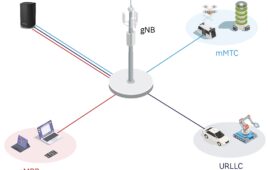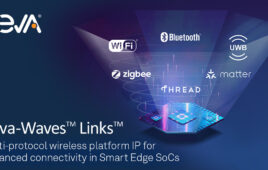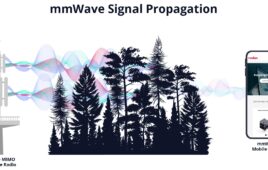AT&T is gearing up for the latest round of fixed 5G tests, this time aiming for real-world trials in three states.
According to a May application submitted to the FCC, AT&T wants to test 5G services and equipment operating at 28 GHz in a “non-simulated business and residential environment.” The carrier has asked to conduct the tests in Waco, Texas, Kalamazoo, Mich., and South Bend, Ind., over the next year and a half. The data gleaned from the tests will be used to “determine the viability of the millimeter wave bands to support 5G wireless communication systems and to validate 5G system designs,” as well as study the “propagation characteristics of the 28 GHz band in urban morphologies.”
At Mobile World Congress in March, AT&T VP of RAN and Device Design Gordon Mansfield said the carrier was planning to launch consumer-friendly 5G pilots in the second quarter. The goal, he said, would be to deliver some of AT&T’s assets – like DirecTV Now – to participants. Mansfield indicated trials in the first half of the year would utilize 28 GHz spectrum, but noted the carrier was also evaluating airwaves at 39 GHz.
AT&T did not immediately respond to questions about whether the latest application and Mansfield’s comments were connected.
As specified in the application, AT&T is aiming to deploy radio units and antennas at up to five locations in each of the three cities, though the carrier also requested approval for 150 experimental transmitter units from various manufacturers. Testing will reportedly involve transmissions between fixed base stations and fixed user equipment operating within a 1 kilometer radius in real-world metro environments.
The carrier said it will utilize channel bandwidths in multiples of 100 MHz up to a maximum of 800 MHz operating with time division duplex (TDD) for uplink and downlink. The equipment will be used to deliver multi-media data, as well as high-speed internet access for on-demand video and gaming.
AT&T noted the air interface protocol used in the tests will be vendor-specific, but said the prototypes are based on LTE-Advanced technology with modifications for 5G. These include “advanced antenna technologies with beamforming and multiple input multiple output (MIMO) techniques, as well as more efficient coding and modulation schemes,” AT&T indicated.
“These technologies are expected to result in higher spectral efficiencies, reduce latency to 1-5 milliseconds, and enable gigabit per second (Gbps) mobile and fixed broadband services, significantly faster than today’s average 4G speeds using LTE,” the carrier wrote in its application.
The proposed tests come as AT&T strides toward initial 5G rollouts targeted at the end of 2018. The carrier has already teamed up with Intel for business trials of millimeter wave 5G services, and announced plans to provide fixed wireless 5G connectivity in Austin. The carrier also conducted a test with Nokia to deliver DirecTV Now content over 39 GHz.




